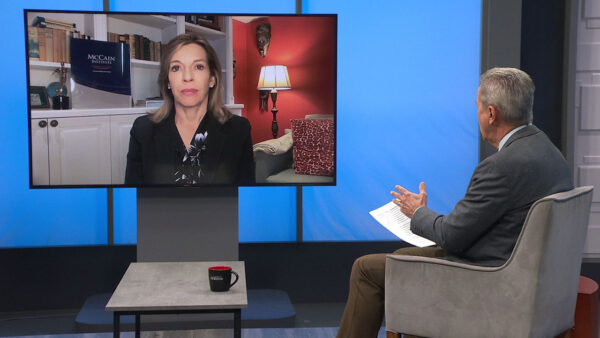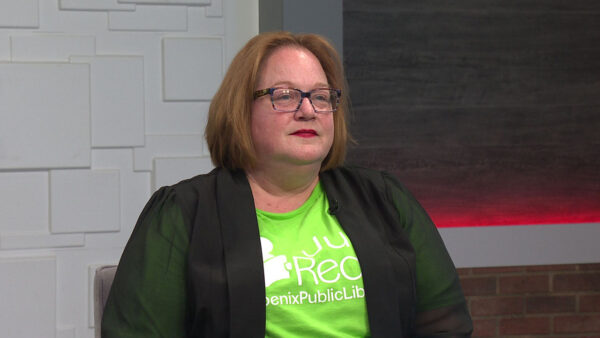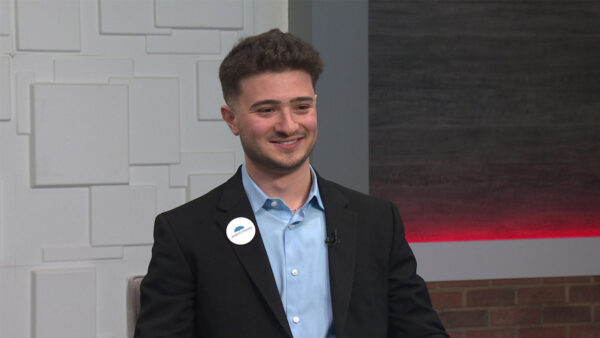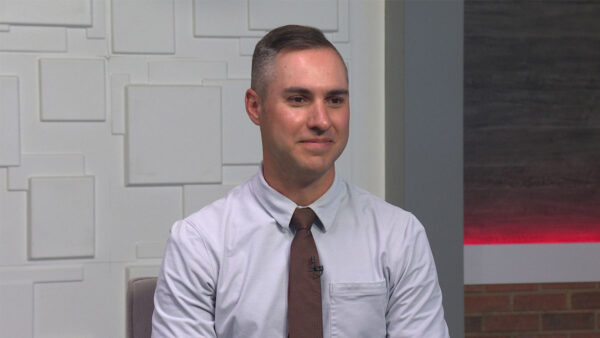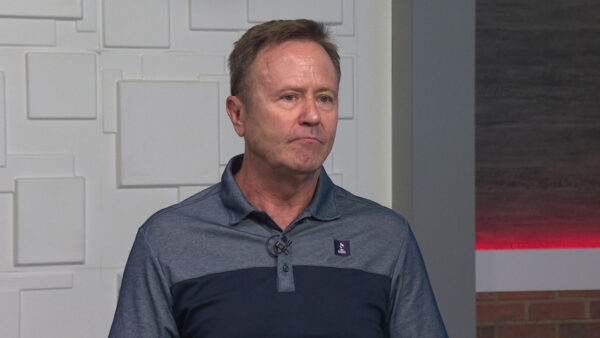Parts of Arizona are expecting flash flooding over the next couple of days. Preparations are ongoing to help residents deal with possible flooding. Hear more from Ken Waters of the National Weather Service in Phoenix about preparations for the storm.
TED SIMONS: Coming up next on "Arizona Horizon," tropical moisture hits the state and makes for emergency preparedness concerns. Also tonight, more than half of Arizona high school grads are not ready for the state's universities. And hear about the latest developments in treating pediatric cancer. Those stories next on "Arizona Horizon."
VIDEO: "Arizona Horizon" is made possible by contributions from the Friends of Eight, members of your Arizona PBS station. Thank you.
TED SIMONS: Good evening and welcome to "Arizona Horizon," I'm Ted Simons. A flash flood watch in effect for parts of Arizona is being eased after forecasts show that tropical moisture streaming into the state is veering more east than expected. The potential for heavy rains still exists, though, as do calls for folks to be prepared for flooding and other weather related emergencies. Here to tell us more is Ken Waters, the warning coordinator meteorologist from the National Weather Service in Phoenix. Good to have you here, thanks for joining us.
KEN WATERS: Thank you.
TED SIMONS: As far as being prepared for a storm. This one's kind of easing a bit but there's parts of the state where it's hitting pretty hard. What do people need to know before a storm hits?
KEN WATERS: The biggest thing is just to be prepared. You know, you want to pay attention to the media. If you hear about weather warnings, take them seriously. One of the new initiatives that's come out of the National Weather Service are cell phone alerts where the warning actually will kick off your cell phone and that's useful here in Arizona because we do get these sometimes tragic flash floods as well as dust storms and other things.
TED SIMONS: And I would imagine water, flashlights, radios, medication, these sorts of things?
KEN WATERS: Sure. It's always a good thing to carry those. Make sure your home is secure. I know there's some areas that are more susceptible to flash floods here in Arizona. So if you're in one of those areas, you want to take extra care, make sure water won't be coming into the house.
TED SIMONS: And, you know, when you think of storms you think of flooding, you think of water but winds especially here in Arizona with trees that aren't used to this kind of wind. You've got to batten down the hatches, don't you?
KEN WATERS: Another I would add also the combination of wind and the rain because sometimes, what happens is you'll get these drenching rains, and then you might have some winds afterwards. What's going to happen is that's going to make those trees much more susceptible to being knocked over. So we see a lot of that. We see telephone poles knocked down. Of course, that happens frequently during the monsoon season which we're still in. And even things like roof damage, that sort of thing.
TED SIMONS: Downed power lines. If you're in a car, a downed power line hits your car, I've been told you're supposed to stay in your car aren't you?
KEN WATERS: Yeah, I'm not an expert on that but I would think it's safer to stay in because you risk all kinds of things. Basically, the car is much better insulated, as long as you stay inside and you're not touching metal.
TED SIMONS: And you call 9-1-1 or something and tell.
KEN WATERS: And don't drive over lines or into lines or anything like that.
TED SIMONS: And crossing washes and those sorts of things.
KEN WATERS: Every year we end up having water rescues, which, you know, actually endanger the responders, so we want to make sure to remind people not to go across washes, especially fast-flowing washes. You don't know how deep that water is. It's amazing, it only takes about a foot or so of water to actually carry a car off.
TED SIMONS: And I would imagine the idea of swimming and playing in floodwaters, you don't know where the water's been.
KEN WATERS: Absolutely yeah. The health concerns there and I would say even more importantly, flowing water, you always have issues with the people unfortunately drowning.
TED SIMONS: And the importance of documenting storm damage in general. After the storm is done. That's a big deal, isn't it?
KEN WATERS: Yes, that's something we take very seriously. As a matter of fact, oftentimes when we have a big serious weather event, we might spend several days trying to collect data, calling responders, asking questions, taking pictures, surveying it, because it all kind of goes into what we call storm data, it's like an historical record of the weather. And it's actually very important because people go back and they try to do studies and they want to know what time of year are you more susceptible to certain areas to hail or to flooding? That sort of thing.
TED SIMONS: So we had you on because we thought this is going to be a humdinger, you guys had us worried out there but it's easing and moving and maybe not quite as bad. What's going on? What happened to this storm?
KEN WATERS: As a history lesson I would do a throwback, one year ago, we had the remnants of hurricane Odile was about to come up into Arizona. And that one took a right turn. Well, the nature of these storms, especially when they're starting to die off is that they can become very unpredictable and just the slightest little shift in their track can really make a huge difference so that's what happened last year with Odile, they had tremendous flooding along the New Mexico-Arizona border and that's a little bit, it's what's going on right now but there's some differences here. In this case this one yes a lot of the moisture is going into southeast Arizona but a lot of it is still lingering over southern Arizona as a whole and we're seeing a lot of showers and thunderstorms and we suspect that's going to continue on through tomorrow and maybe even for some strong thunderstorms tomorrow. So we're keeping a close eye out.
TED SIMONS: So this is just phase one then. We could really have some action again tomorrow?
KEN WATERS: Yes, yes. So don't, don't -- don't wish it away just yet.
TED SIMONS: All the information we talked about earlier still applies when you know what breaks loose tomorrow.
KEN WATERS: We're not expecting quite the amount of rain that we were looking at. I mean, a lot of our numerical models were indicating two to three inches. That would have been a real drencher and caused a lot of flooding issues. We've kind of backed off on that because of the track of the storm. We're down to about half to three quarters of an inch.
TED SIMONS: And real quickly, this is El Niño influenced, isn't it?
KEN WATERS: Yeah, I think you can pretty much tie it in. We are in an El Niño. The sea surface temperatures off the pacific have been at record levels, really, really warm and what that does is that helps support those tropical storms out there, makes them stronger, makes them more likely to endure longer and that just means a higher chance that some of that activity is going to make it up to Arizona.
TED SIMONS: We'll see what gives later on tonight and tomorrow. Good information, thanks for joining us.
KEN WATERS: Thanks, Ted.
Ken Waters : Member of National Weather Service in Phoenix

















